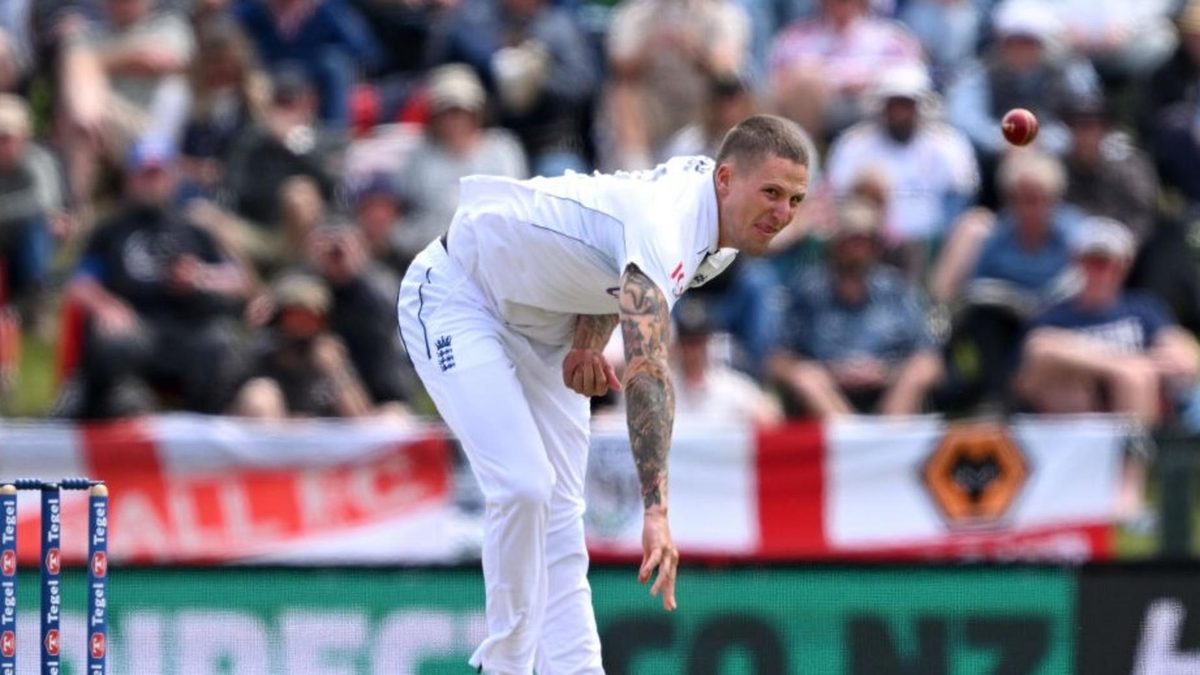
How much credit do England’s selectors deserve for picking Brydon Carse? On the one hand, this is another qualities over quantifiables selection. He averages north of 33 in first-class cricket, and has taken 20 wickets in a season just twice. On the other hand, those qualities have been so obvious in his first three Tests that his inclusion seems obvious - as all the best picks do in hindsight. Carse is skilful, capable of hitting speeds in the high 80s and above consistently, and will bowl to whatever plan his captain asks. He differs from England's other punts because this is not a selection based on what he might be, but on what he is right now. Rob Key et al. have spotted that he already has all the tools needed to be a tough proposition at Test level, and backed him to become a key component of the attack straightaway. Looking at everything he offers, you can see why.
Also read: An XI of England’s most bonkers Bazball selections, ranked from least to most mad
In one respect, they should certainly be commended, with Carse’s return following a ban for historic betting offences handled with compassion and conviction. They ensured he remained valued, and got him in at the first possible opportunity. Regimes past would have waited for that unarguable county campaign as proof he had returned undiminished. But at 29, Carse may well be in his bowling peak. He has got his go at the perfect time.
Christchurch has been another case in point, with Carse taking seven wickets in the match so far. He will resume on day four needing two from five wickets for a first Test five-for. But it’s the manner and timing of his interventions that really stands out. Carse is hugely versatile. He was England’s best bowler with the new ball on day one, not because of consistent probing, but because of how threatening his best balls were. When the shine came off, he switched to bowling the Neil Wagner-esque short-ball spells so valued by Ben Stokes, tempting Daryl Mitchell in the first innings and Rachin Ravindra in the second into ill-advised cross-bat shots.
It’s a simple strategy. With, at times, three fielders in a line just in front of square on the leg side, and a fine deep third, the options when faced with a bouncer barrage are attempting attacking shots containing unavoidable risk, or being rendered completely shotless. But it’s also deceptively hard to deliver as a bowler. Not all bouncers are created equal. Too short too often, and you’ll be penalised. Not short enough and other scoring areas open up. And each bumper must contain the requisite venom to pose a challenge. Carse’s execution was close to exemplary. An on-the-money yorker ended New Zealand’s first innings, something that shouldn’t be underestimated given how the tail has troubled England under Ben Stokes and back further.
Brydon Carse finishes with a four-wicket haul as New Zealand are bowled out for 348.
— Wisden (@WisdenCricket) November 28, 2024
Above or below par do you think? pic.twitter.com/IkriiscrCs
It’s Carse’s work with the older ball in less-than-helpful conditions that mark him out as something special, and the short ball is only part of that. It was lift from a fuller length that accounted for Saud Shakeel in the 61st over of the second Multan Test, and angle in from wide of the crease that accounted for Mohammad Rizwan in the second innings of that game. Here, while Glenn Phillips might have been pushed back by the short-pitched strategy, it still took a ball at just the right length to catch him on the crease and be clipping the bails to see him off.
He can bat too, as he showed on the morning of day three. Batting at No.10, Carse made the highest score of his nascent Test career in the morning, blasting 33 off 24 to nudge England’s lead from significant to formidable. The pick of the shots was an extraordinary scoop-cum-hook for six, Carse adjusting to send the ball high over fine leg after Will O’Rourke had spotted him moving across his stumps and targetted his chest.
All of which makes you wonder if Carse has not just shown himself to be a bowler of Test calibre, but if he has done enough to insert himself in the top rungs of England’s pace-bowling pecking order. Mark Wood, if fit, remains the first name on the teamsheet, and if Jofra Archer resumes his 2019 mantle, he’s in too - though it’s a conditional the size of Josh Hull. But already Carse is ahead of Matthew Potts and Olly Stone, while in Australia he will surely find himself ahead of Chris Woakes as well.
What’s intriguing is how England view him compared to Gus Atkinson. Atkinson enjoyed a stunning start in Test cricket in the 2024 summer and coped decently with the Pakistan challenge, taking two wickets in every innings he bowled. But while Carse’s start hasn’t been quite as eye-catching purely from a wickets-taken point of view, he already looks a more rounded bowler, and one capable of sustaining high speeds for longer. At Christchurch, Atkinson has endured perhaps the toughest Test of his career, with the Canterbury nor’wester interfering with his run-up and rhythm, contributing to his 11 no-balls bowled. Back in England, however, it may be that Atkinson proves the more incisive bowler, as a potent wobble seamer armed with the new ball. It will be an intriguing subplot in games to come, and in the pair of them, England may have found the core of a bowling attack that can threaten in all conditions.







